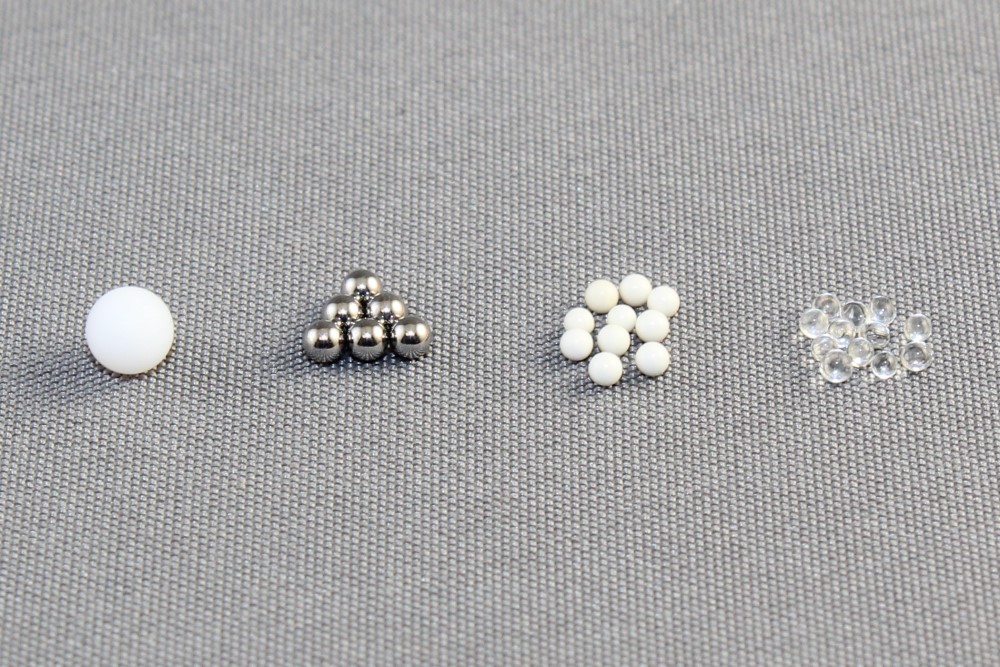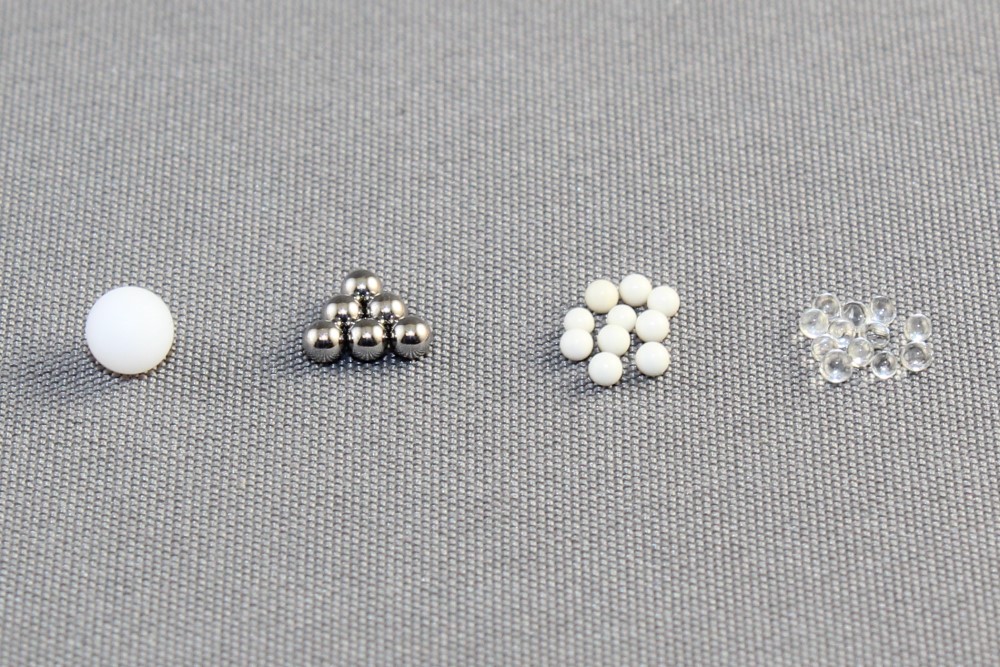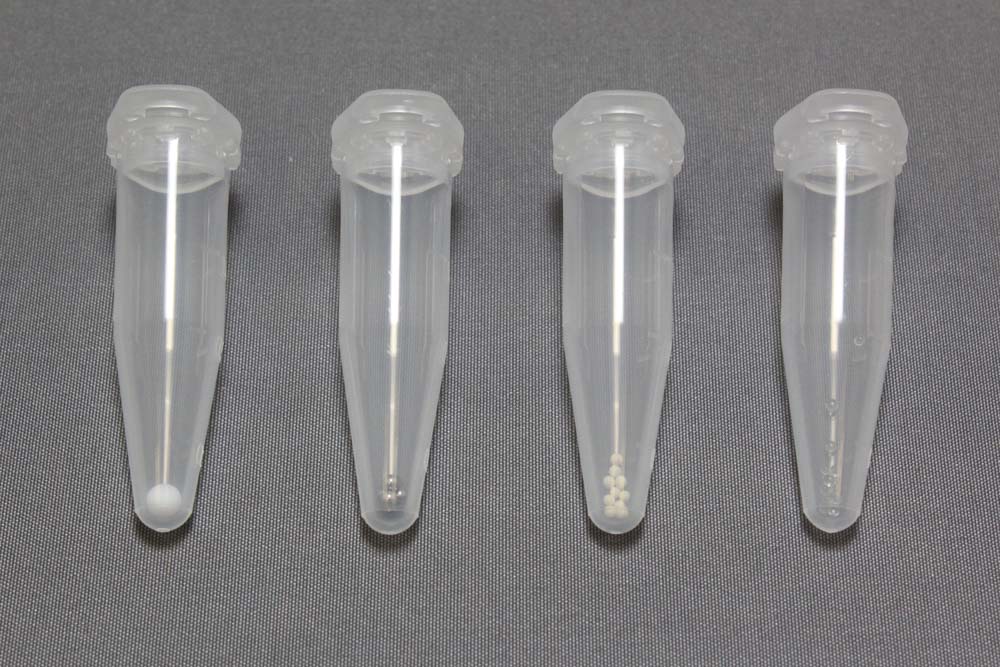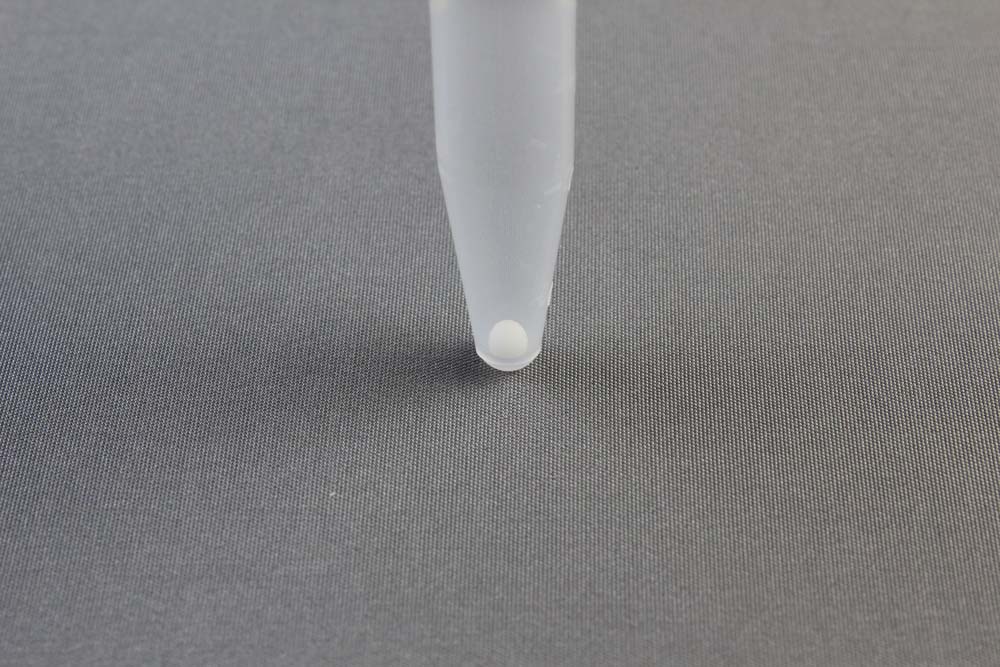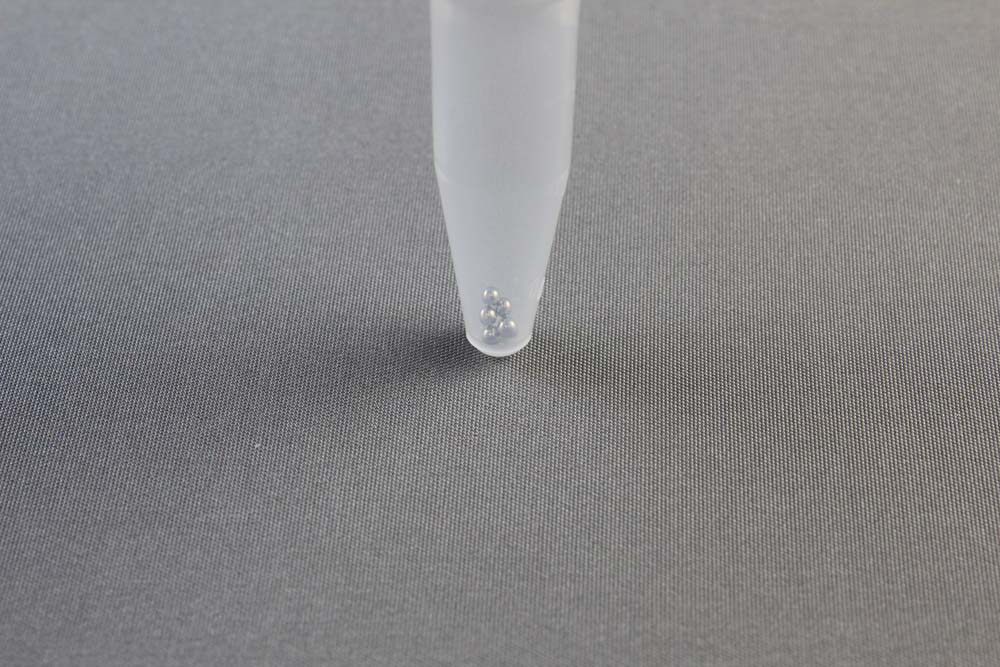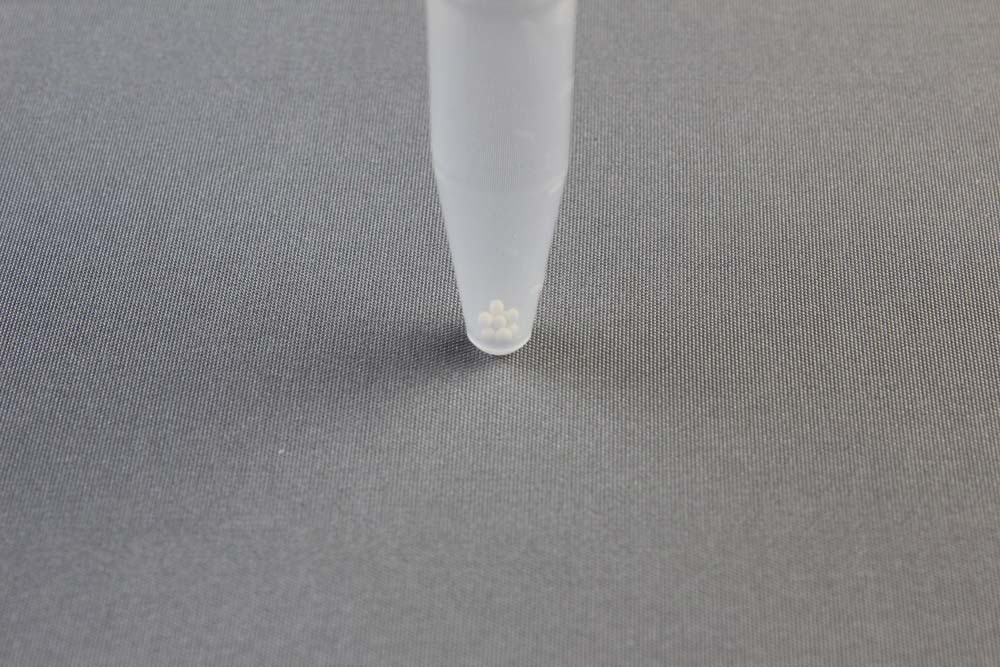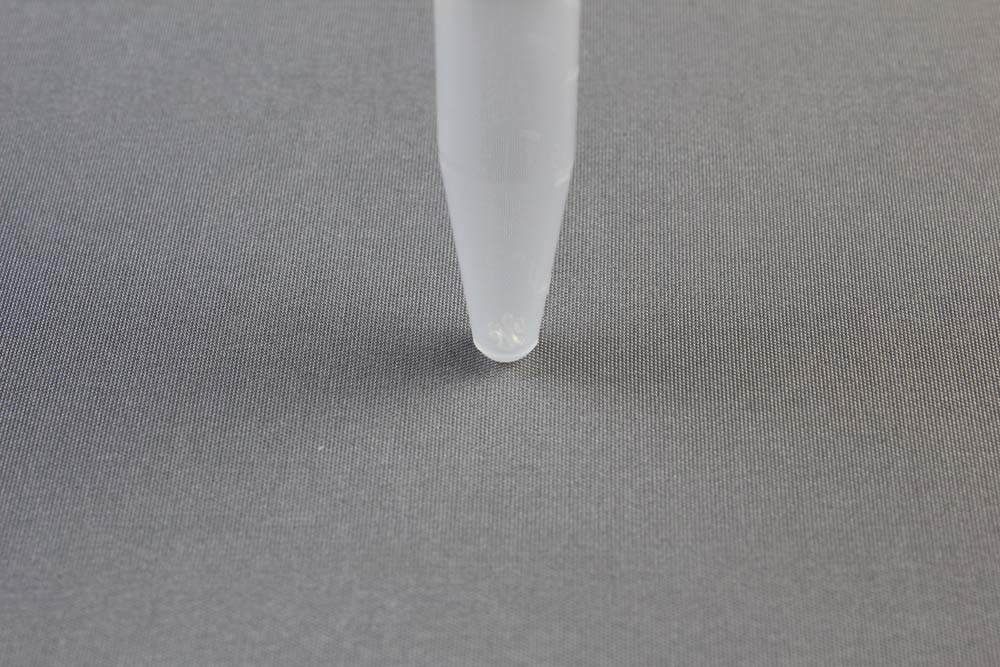上海金畔生物科技有限公司代理日本同仁化学 DOJINDO代理商全线产品,欢迎访问官网了解更多信息
上海金畔生物代理Hampton research品牌蛋白结晶试剂耗材工具等,我们将竭诚为您服务,欢迎访问Hampton research官网或者咨询我们获取更多相关Hampton research品牌产品信息。Products > Tools & Seeding > Seed Bead > Seed Bead™ Kits
Seed Bead™ Kits
Applications
- Generate seeds of protein crystals
Features
- Easily generate consistent seed stocks
- Use serial dilution to control the number of seeds introduced into the drop
- Microseed matrix screening (MMS) seed stock
- PTFE, Stainless Steel, Zirconium Silicate Ceramic, or Glass Seed Bead
Description
The Seed Bead kits are used to create a seed stock for performing subsequent seeding experiments. The Seed Bead kits contains 24 Seed Bead Tubes, a special 1.5 ml microcentrifuge tube, shaped to maintain the seed in the sample during mixing. Each tube is configured with a PTFE, Stainless Steel, Zirconium Silicate Ceramic, or Glass Seed Beads.
Seeding allows one to grow crystals in the metastable zone. Crystallization in this zone provides control, reproducibility and an improved likelihood of a successful crystallization experiment. Also, crystals can grow from seeds but cannot spontaneously nucleate. By placing a seed or solution of seeds in a drop which is saturated to the metastable zone, one can use the seeds to grow larger single crystals. By controlling the number of seeds introduced into the drop, one can control the number of crystals grown. It is not practically possible to measure and know the number of seeds introduced to a drop, but by performing serial dilutions from a concentrated seed stock, one can control the number of crystals grown in the drop.
Using the Seed Bead kits, one can create crystal seed stock for subsequent seeding experiments. Crystals are placed in the microcentrifuge tube with the Seed Bead(s) and either vortexed or sonicated to generate a seed stock. Then by performing serial dilutions, one can control the number and size of crystals in the experiment.
The Seed Bead kit is useful for the preparation of seed stocks for automated and semi-automated microseeding (D’Arcy 2007, Harlos 2008).
Each Seed Bead Kit (HR2-320) contains 24 special microcentrifuge tubes, each tube containing a single 3mm PTFE Seed Bead.
Each Seed Bead Steel Kit (HR4-780) contains 24 special microcentrifuge tubes, each tube containing a six 1.6 mm Stainless Steel Seed Beads.
Each Seed Bead Ceramic Kit (HR4-781) contains 24 special microcentrifuge tubes, each tube containing a ten 1.0 mm Zirconium Silicate Ceramic Seed Beads.
Each Seed Bead Glass Kit (HR4-782) contains 24 special microcentrifuge tubes, each tube containing a ten 1.0 mm Glass Seed Beads.
CAT NO
HR2-320
NAME
DESCRIPTION
24 tubes with PTFE Seed Bead
PRICE
$78.00
cart quote
CAT NO
HR4-780
NAME
DESCRIPTION
24 tubes with Steel Seed Beads
PRICE
$75.00
cart quote
CAT NO
HR4-781
NAME
DESCRIPTION
24 tubes with Ceramic Seed Beads
PRICE
$75.00
cart quote
CAT NO
HR4-782
NAME
DESCRIPTION
24 tubes with Glass Seed Beads
PRICE
$75.00
cart quote
Support Material(s)
 HR2-320 Seed Bead User Guide
HR2-320 Seed Bead User Guide HR4-780 Seed Bead Steel User Guide
HR4-780 Seed Bead Steel User Guide HR4-781 Seed Bead Ceramic User Guide
HR4-781 Seed Bead Ceramic User Guide HR4-782 Seed Bead Glass User Guide
HR4-782 Seed Bead Glass User Guide Related Item(S)
- Crystal Crusher
References
1. Stura, E.A., Wilson, I.A., Methods: A Companion to Methods in Enzymology (1990) 1, 38-49.
2. Stura, E.A., Wilson, I.A., “Seeding Techniques” in Crystallization of Nucleic Acids and Proteins: A Practical Approach. Oxford University Press (1992) 99-126.
3. A method to produce microseed stock for use in the crystallization of biological macromolecules Luft, J.R., DeTitta, G.T. Acta Cryst. (1999). D55, 988-993.
4. J.R. Luft and G.T. DeTitta, Methods in Enzymology (1997) 276, 110-131.
5. Structure of an orthorhombic form of xylanase II from Trichoderma reesei and analysis of thermal displacement. Watanabe et al. Acta Cryst. (2006). D62, 784-792.
6. Crystallization and preliminary crystallographic analysis of p40phox, a regulatory subunit of NADPH oxidase. K. Honbou, S. Yuzawa, N. N. Suzuki, Y. Fujioka, H. Sumimoto and F. Inagaki. Acta Cryst. (2006). F62, 1021-1023 (Used seed bead to optimize)
7. Purification, crystallization and preliminary X-ray diffraction study of human ribosomal protein L10 core domain. Yuji Kobayashi et al. Acta Cryst. (2007). F63, 950-952
8. An automated microseed matrix-screening method. Allan D′Arcy, Frederic Villard and May Marsh. Acta Cryst. (2007). D63, 550-554
9. The role of bias in crystallization conditions in automated microseeding. Edwin Pozharski et al. Acta Cryst. (2008). D64, 1222-1227.
10. Transmission electron microscopy for the evaluation and optimization of crystal growth. Hilary P. Stevenson & Guillermo Calero et al. Acta Cryst. (2016) D72, 603-615.
11. Microseed matrix screening for optimization in protein crystallization: what have we learned? D’Arcy A, Bergfors T, Cowan-Jacob SW, Marsh M. Acta Crystallogr F Struct Biol Commun. 2014 Sep;70 (Pt 9):1117-26. doi: 10.1107/S2053230X14015507. Epub 2014 Aug 29.


